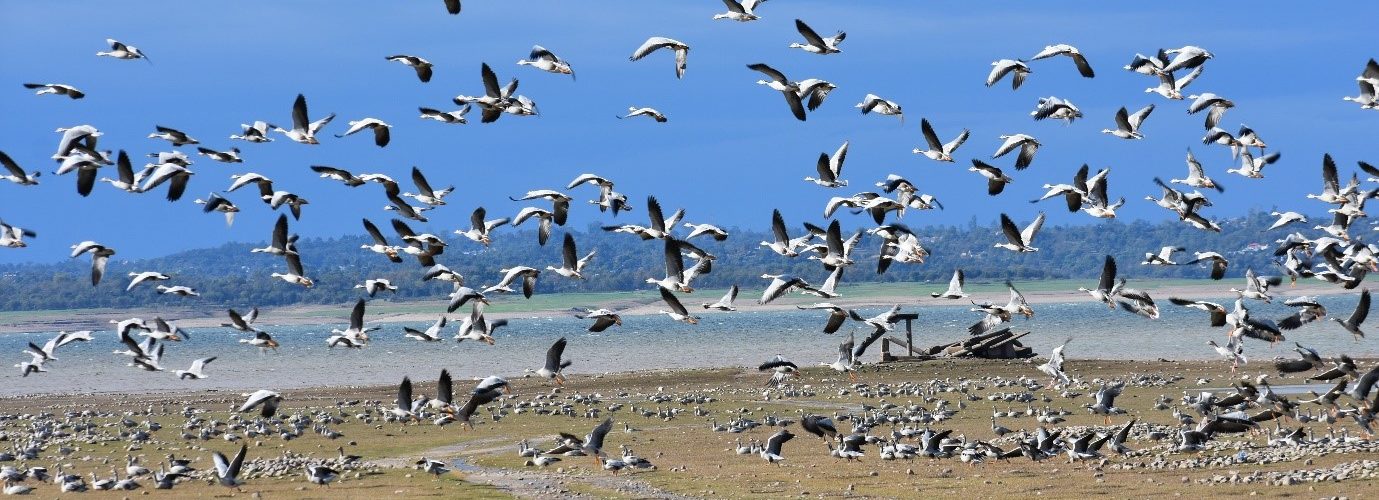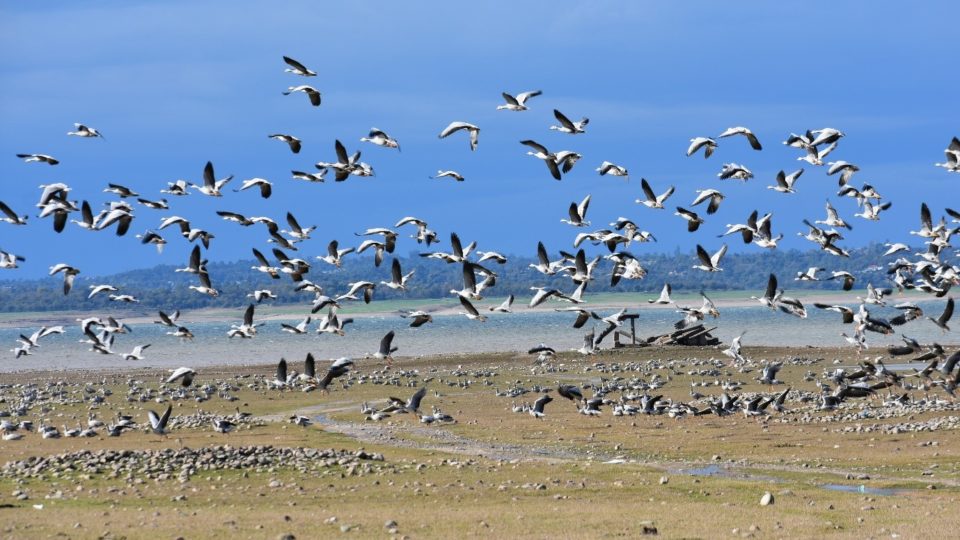One taxonomic class that have been a component of fables, folklores and stories world over is that of migratory birds. These winged visitors have been making long journeys across the globe since time immemorial. Birds migrate from regions of low or decreasing resources to the ones having surplus, majorly of food and nesting grounds. However, threats like destruction of habitats, poaching, climate change and increasing urbanization are already threatening their survival calling for greater efforts to address this human-bird conflict.
One such significant but less talked about threat is that of light pollution. With increase in urbanization and change in lifestyles, there is a significant increase in the amount of artificial lighting that adorn earth’s landscape. The trends are such that studies suggest an annual increase in artificial light globally by almost 2%. Even, ecologically fragile regions like beaches, riverine floodplains, forest fringes are also getting artificially illuminated for the sake of infrastructure projects, tourism or advertisements to name a few.
This phenomenon is seriously hampering movement of nocturnal migratory birds by disrupting and modifying their natural cycle of night and day, causing disorientation and exhaustion that may lead to collisions with buildings and predation. It is also reported that it has adverse effect on behavior pattern of birds too like feeding, breeding and communication. Every year many migratory birds fall prey to light pollution but estimates are not available.
Indian subcontinent is a major destination for the migratory birds with the region falling within three of the nine global flyway networks with Central Asian Flyway species constituting majority of the annual visitors. Zoological survey of India puts total number of migratory species in India to be 457, out of which 83% are birds, making it one of the major stakeholders in the conservation of migratory species and their habitats, falling within its administrative boundaries.
Wetlands, pivotal stopover and wintering sites to migratory waterbirds in the country covering 4.7% of its total geographic area. Every year thousands of migratory birds visit these ecosystems for the refuge and resources they provide. Many of these sites are also located within urban areas spread across country. Unfortunately, India has already lost one-third of these ecosystems to threats like illegal construction, urbanization amongst other factors, in last four decades. Urbanization, infrastructure projects and tourism activities have led to massive increase in artificial lighting of the night sky, affecting movements of migratory birds. Urban wetlands, that act as isolated islands of refuge for these migratory birds, are also facing constant threat. WISA estimates that 30% of urban wetlands in India have already got lost in last three decades itself. Proliferation of artificial lighting system is an unavoidable fallout that starts affecting a wetland much before it gets completely lost, thereby adversely impacting its biodiversity. Even isolated and notified wetlands situated near or within urban areas suffer from light pollution in quantities enough to affect movement of migratory birds.
India has been a party to the Convention on the Conservation of Migratory Species of Wild Animals (CMS) since 1993 and currently holds the presidency of the forum. At its 13th conference of parties, held at Gandhinagar, Gujarat, the Convention considered the issue of light pollution. Through Resolution 13.5 Light Pollution Guidelines for Wildlife, COP13 endorsed National Light Pollution Guidelines for some groups of migratory wildlife including Marine Turtles, Seabirds and Migratory Shorebirds. The convention has recommended Parties and other stakeholders to use the guidelines to limit and mitigate the harmful effects of artificial light on migratory species.
India may not be under as much light pollution as developed countries of USA or Europe, yet gradually, as economy transits more towards secondary and tertiary sectors for achieving ambitious economic growth rates, this much desired gap is decreasing. Already, estimates of the world atlas of artificial night sky brightness has put a total area of 24.7% in the country along with population of 58.5% as exposed to light pollution. These estimates show the critical need for urgent action on this kind of pollution before the situation turns grim.
With its current presidency of CMS, India must set an example by passing legislations and regulations for tackling light pollution for the sake of migratory birds. Also, such legal instruments must also be mainstreamed within existing policies and plans meant for conservation of biodiversity in the country such as National Action plan for conservation of Migratory birds, National biodiversity Action Plan, National plan for conservation of aquatic ecosystems etc. Also, guidelines need to be devised for different sectors with substantial contribution to light pollution, particularly those sited in close proximity to Important bird areas, Ramsar sites or National parks and sanctuaries. Also, it’s pivotal that migratory corridors are mapped and separate plenary regulations are put in place to check artificial lighting. It is a critical requirement if India is steadfast in its commitments towards conservation of biodiversity, especially towards migratory species.
Wetlands International South Asia, as coordinator of annual Asian Waterbird Census, stands in solidarity with the global conservation fraternity in furthering the cause of migratory birds, this world migratory birds day. We support the campaign launched under the theme “Dim the Lights for Birds at night” and urge National and state governments to take necessary steps to regulate levels of artificial lights especially around crucial wetland habitats that are known to host winter visitors. As the organization is committed to sustaining and restoring wetlands, their resources and biodiversity in South Asia, we recognize the issue of light pollution as a serious threat to migratory birds and vows to include this aspect of threat and possible solutions within our future endeavors to contribute our bit in this global campaign.


Leave a comment